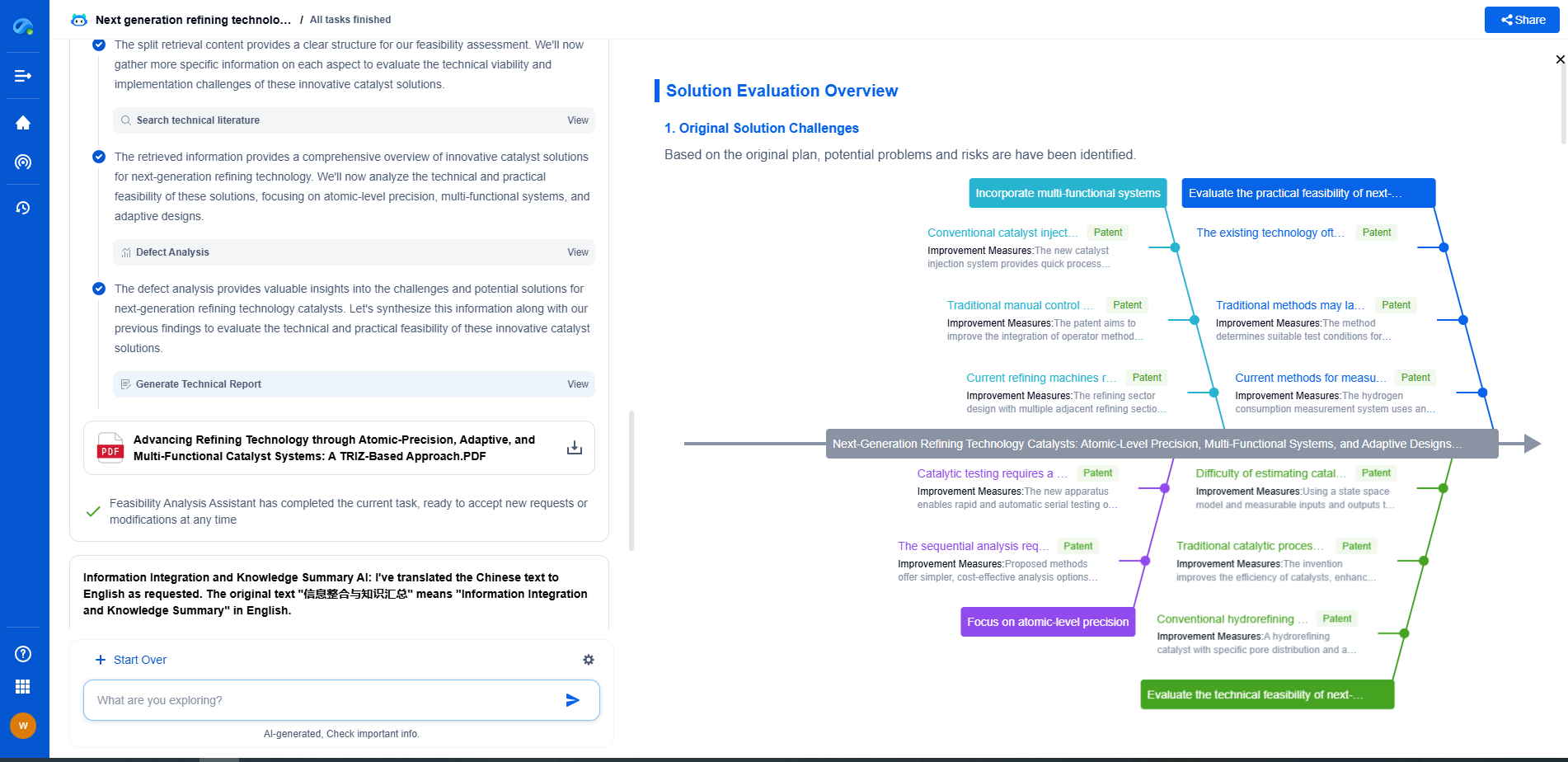How to Design Efficient Photovoltaic Systems Using Advanced Semiconductor Diodes?
JUN 27, 2025 |
Understanding Photovoltaic System Basics
Before diving into the specifics of semiconductor diodes, it is crucial to understand the basic components of photovoltaic systems. These systems typically consist of solar panels, an inverter, a battery storage system, and the necessary electrical components to connect everything together. The solar panels, made up of numerous photovoltaic cells, are the heart of the system. These cells are responsible for converting sunlight into direct current (DC) electricity.
The Role of Semiconductor Diodes in Photovoltaic Systems
Semiconductor diodes in photovoltaic systems primarily function as bypass diodes and blocking diodes. Bypass diodes are vital for preventing power loss due to shading. When a section of a solar panel is shaded, it can significantly reduce the output of the entire panel string. Bypass diodes allow the current to bypass the shaded sections, thus maintaining power output. Similarly, blocking diodes prevent the reverse flow of current from the battery to the solar panels during the night or low light conditions.
Selecting Advanced Semiconductor Diodes
The selection of semiconductor diodes has a significant impact on the overall efficiency of the photovoltaic system. Advanced semiconductor diodes are designed to offer lower forward voltage drop, higher current capacity, and improved thermal performance. Schottky diodes, for example, are often used in photovoltaic systems due to their low forward voltage drop and fast switching capabilities. These diodes can significantly reduce power losses and improve the efficiency of the solar power system.
Design Considerations for Efficient Systems
When designing photovoltaic systems, it is essential to consider factors such as the arrangement of solar panels, the configuration of diodes, and the environmental conditions. The arrangement of panels should minimize shading and allow for optimal sunlight exposure. This can be achieved through strategic placement and angling of panels. The configuration of semiconductor diodes should ensure minimal power loss and maximum operational efficiency. It is also important to account for environmental factors such as temperature variations and potential physical obstructions.
Incorporating Technological Advances
The field of photovoltaic technology is rapidly evolving with continuous advancements in materials and design techniques. Incorporating the latest technological advances in semiconductor diodes can significantly enhance system efficiency. Innovations such as the development of novel materials with superior electrical properties and the implementation of smart diode technologies are paving the way for more efficient photovoltaic systems. Staying updated with these advances and integrating them into system design can provide a competitive edge.
Conclusion
Designing efficient photovoltaic systems requires a thorough understanding of semiconductor diodes and their application within the system. By carefully selecting advanced diodes and considering various design factors, it is possible to maximize the efficiency and reliability of solar power systems. As technology continues to advance, the potential for further improvements in photovoltaic system design grows, promising a brighter and more sustainable future in solar energy.
Accelerate Electronic Circuit Innovation with AI-Powered Insights from Patsnap Eureka
The world of electronic circuits is evolving faster than ever—from high-speed analog signal processing to digital modulation systems, PLLs, oscillators, and cutting-edge power management ICs. For R&D engineers, IP professionals, and strategic decision-makers in this space, staying ahead of the curve means navigating a massive and rapidly growing landscape of patents, technical literature, and competitor moves.
Patsnap Eureka, our intelligent AI assistant built for R&D professionals in high-tech sectors, empowers you with real-time expert-level analysis, technology roadmap exploration, and strategic mapping of core patents—all within a seamless, user-friendly interface.
🚀 Experience the next level of innovation intelligence. Try Patsnap Eureka today and discover how AI can power your breakthroughs in electronic circuit design and strategy. Book a free trial or schedule a personalized demo now.
- R&D
- Intellectual Property
- Life Sciences
- Materials
- Tech Scout
- Unparalleled Data Quality
- Higher Quality Content
- 60% Fewer Hallucinations
Browse by: Latest US Patents, China's latest patents, Technical Efficacy Thesaurus, Application Domain, Technology Topic, Popular Technical Reports.
© 2025 PatSnap. All rights reserved.Legal|Privacy policy|Modern Slavery Act Transparency Statement|Sitemap|About US| Contact US: help@patsnap.com

